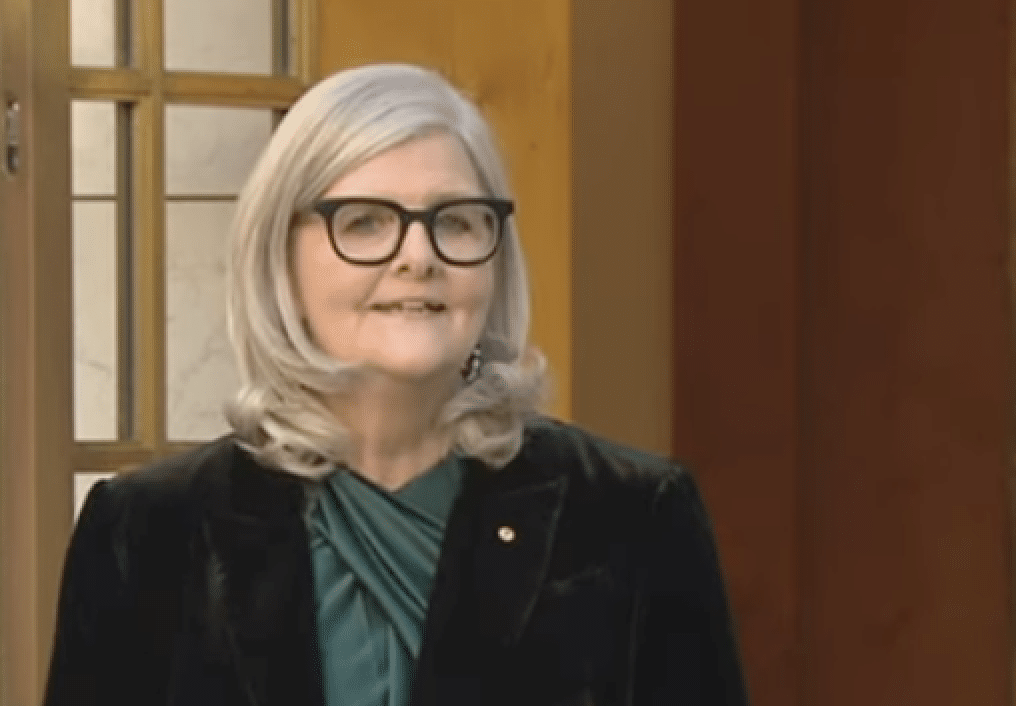The headline figures look shocking. Australia’s new Governor General Sam Mostyn is set to receive a $214,000 a year “pay rise”, when compared to her predecessor David Hurley, according to the bill that was introduced to parliament on Monday.
It’s even more shocking to think that this pay bump is going to a woman when so often it goes the other way.
But in this case, there is much more to the total figures that are worth considering as Mostyn prepares to officially replace Hurley on July 1.
To be clear, earning $709,017 a year is an obscene amount of money, and it’s an easy figure for the Australia Republic Movement to highlight as being “out of touch” and “indefensible” during a cost-of-living crisis. Hurley took home $495,000 a year.
Commentators have called for Mostyn to lower her salary, and have asked if she’s really “worth it.” Newspaper headlines express “outrage” at the move today.
For comparison’s sake, Prime Minister Anthony Albansese is earning $607,471 a year, which includes the $225,750 base salary paid to all members of parliament, plus the premium he receives as PM. Opposition leader Peter Dutton is earning $432,239. All MPs will receive a 3.5 per cent wage rise from July, after the independent remuneration tribunal announced the increase last week.
Over in the corporate sector, salaries hit a different stratosphere. Australia’s highest-paid ASX 300 CEO, Shemara Wikramanayake, is taking home $30,404,240, the only woman in the top ten. The next woman is in the 25th spot, Meg O’Neill, who is earning $6.7 million at Woodside. There are no other female CEOs in the top fifty.
So why that massive pay difference, between Mostyn and Hurley?
It’s due to the fact that Mostyn does not have access to Commonwealth payments, like the military pensions that her predecessor Hurley receives, following his service in the Australian Defence Force. GCs who have this judicial or military background and therefore access to other payments often opt for a lower salary, according to Anne Twomey, a constitutional lawyer from the University of Sydney.
“Since the time of Sir William Deane as governor-general, it has been customary for the governor-general to request that their salary be reduced by the amount of any annual Commonwealth pension they are paid,” she told AAP.
“As the new governor-general does not have a military or judicial pension, her salary will necessarily be higher. Any fair comparison, therefore, should take into account the pensions of her predecessors.”
As outlined by Patrick Gorman, assistant minister to the prime minister, when introducing the bill to parliament, the proposed salary is calculated by referencing the estimated average salary of the Chief Justice of the High Court of Australia over the notional five-year term.
“Where, in the past, a governor general has been the recipient of other commonwealth entitlements – such as a military pension – the annual salary has been adjusted accordingly. Ms Mostyn is not a recipient of any such entitlements,” Gorman said.
Ambassadors like Kevin Rudd and Stephen Smith earn their post-parliamentary pensions, typically worth at least six figures, on top of what they receive at the upper end of the public service salary band, which ranges from $292,000 to $441,000
The bill’s explanatory memorandum said the figure was calculated to “moderately exceed the expected average salary of the chief justice of the High Court.”
Currently, the Chief Justice earns $648,880 a year, as set by the Remuneration Tribunal. However, according to projected wage growth, that salary is expected to be closer to $769,989 in five years, with an average over the period of $708,017.
Once approved by Parliament, the GC’s salary cannot be changed during the term.
Expect more outrage over this salary bump, the bill is set to be debated in parliament later this week.


